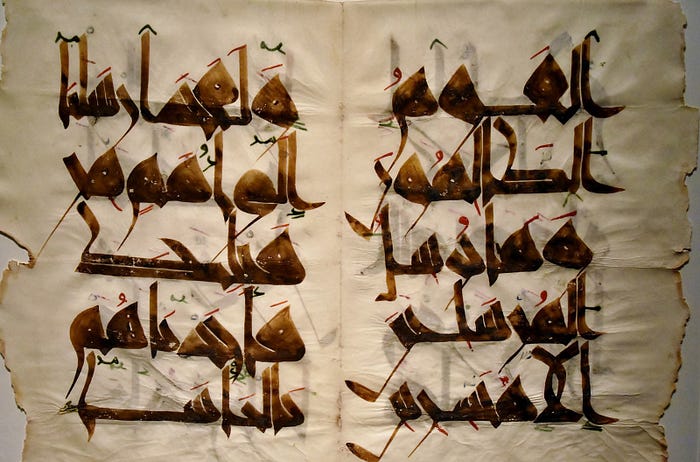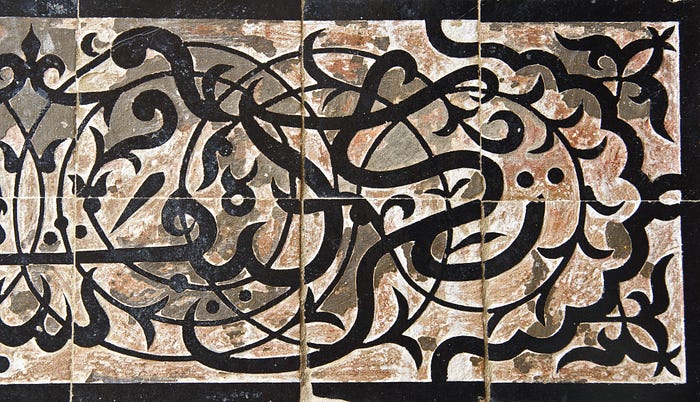“What an extraordinary way the reed pen has of drinking darkness and pouring out light” – Abu Hafs Ibn Burd Al-Asghar

Arabic calligraphy, also known as Khatt Arabi (خط عربي), is a form of decorative writing based on Arabic letters. The earliest record of Arabic calligraphy is Kufic or Kufi script which takes its name from the city Kufa in Iraq and was first found in the early manuscripts of the Quran. The development of Arabic calligraphy took a turn during the 10th century when the Muslims made sure to preserve and document the Quran for everyone to have access to. As Islam started to expand throughout Africa, Asia and Europe different styles of Arabic calligraphy started to appear; Naskh, Thuluth, Ruqah, Nasta’liq, Ta’liq and Maghrebi. Over time Arabic calligraphy was used by scholars to preserve and share their knowledge, in coin design and architecture.
“What an extraordinary way the reed pen has of drinking darkness and pouring out light” – Abu Hafs Ibn Burd Al-Asghar/Andalusi poet
The Maghrebi script was developed in Maghreb (North Africa), Al-Andalus (today known as Iberia) and Sudan during the Islamic conquest around 661 – 750 CE. Influenced by Kufic calligraphy, the Maghrebi script is usually written in brown ink using a pointed tip which gives a line of even thickness and has flat vowels. Unlike the Kufic script, the vowels are slanted and the dots are coloured to assist with pronunciation. This decorative calligraphy is found mostly around Spain and Morocco on the architecture and ancient Quran manuscripts (today held in museums). It’s beautiful bold lettering and curvy ink strokes have contributed in building a sophisticated and civilised society and was favoured by prominent scientists, poets, philosophers and scholars who were able to record and share their knowldge in standard Arabic, Amazighi languages and Maghrebi Arabic. Unfortunately, during the reconquista or the expansion of Christian Kingdoms throughout the Iberian peninsula the Arabic language and literature were banned causing for the Maghrebi to be abandoned and for some of the scripts to be hidden.

As mentioned above, the Maghrebi script is found mostly around Spain and Morocco in palaces, mosques and castles. Located in Granada, Spain the Alhambra which takes its name from the Arabic al-qala’a al-hamra (the Red Castle), was re-built under the Nasrid dynasty by Muhammad ibn al Ahmar (Emir of Granada). Around the castle the Nasrid motto “There is no victor but Allah” is inscripted throughout as a reminder of who holds power. Nasrid architectural decorations tend to rely on scripts, geometric and floral shapes. As seen above, the Nasrid motto is decorated with an elegant floral design which goes around the letters in a flow like and curved manner which in this case is easy for both a non-native (who’s familiar with Arabic) and native to read.

Andalusi and Arab décor avoids the use of animal and human motfis and instead relies on calligrahy and gemotric patterns. The calligraphy placed around the architecture is not only limited to Quran verses and praises to Allah but poetry from the best of scribes and phrases that admire the monarchy.

Today the Maghrebi script can be found around Morocco in Marrakesh, Fes and Rabat as well as Spain in Cordoba, Granada and Seville.
